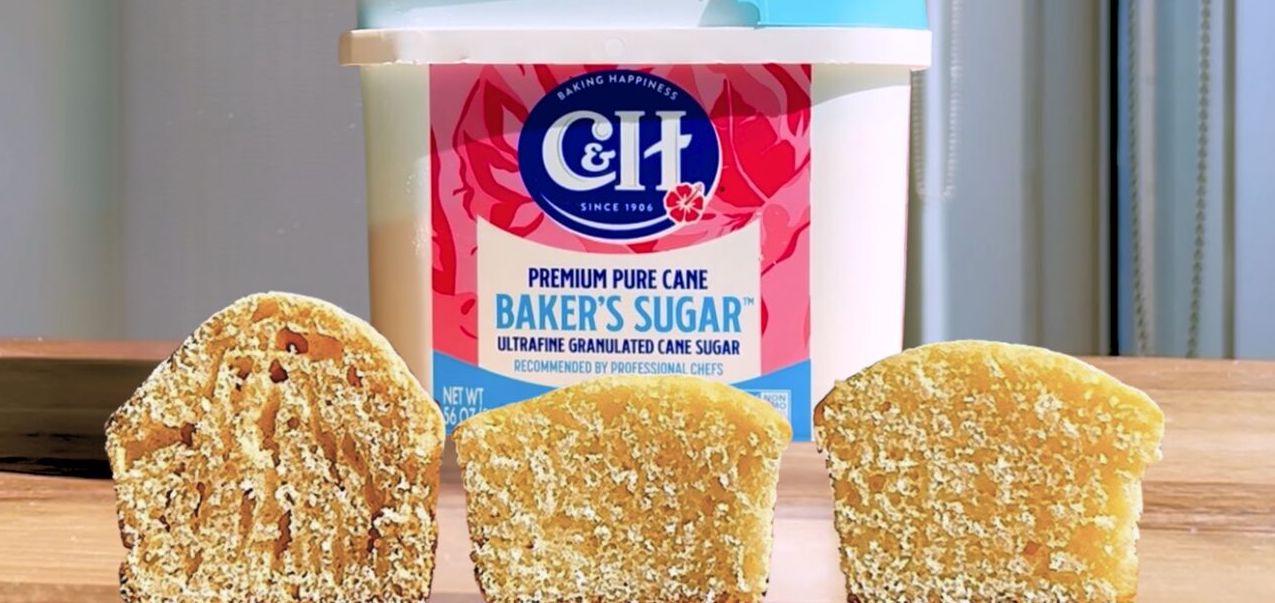
Categories: baking / Cakes & Cupcakes / everyday baking
If you've ever attempted to cut down on sugar in a recipe to make it "less sweet," you may have been surprised by the results. The texture might have turned rubbery, the crumb could have been coarse or dry, or the cake may have baked up pale and uneven. This happens because sugar does much more than just sweeten. It plays a crucial structural role in baking. During the creaming process, sugar crystals create tiny air pockets in the fat, which helps aerate the batter. These air pockets expand in the oven, providing the cake with lift and a tender texture.
Additionally, sugar is hygroscopic, meaning it attracts and retains moisture. This characteristic contributes to a moist, soft crumb and helps baked goods stay fresh for a longer time. Sugar also drives browning reactions, resulting in that desirable golden crust. Therefore, when you reduce sugar, you're not just lessening the sweetness; you're altering how the entire recipe functions.
And to make things even more complicated, not all sugar is created equal. There are various types of sugar, each with different crystal sizes, textures, and behaviors in the oven. To help clarify this, I tested three of the most common sugars used in baking: powdered sugar, standard granulated sugar, and C&H® Baker's Sugar™. The goal was to observe how each type affects texture, aeration, and browning, and to demonstrate why C&H® Baker's Sugar™ is the preferred choice for achieving professional-level results at home.
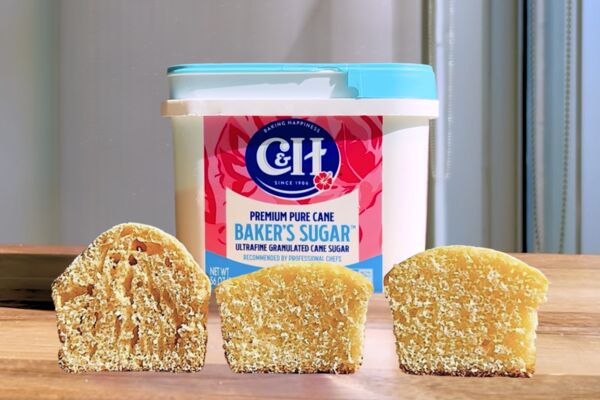
Sugar Does More Than Sweeten
When it comes to baking, not all sugars are created equal, and that's where C&H® Baker's Sugar™ stands out. Its finer, consistent crystal size provides better control and results across essential baking functions:
- Creaming and Aeration: The ultrafine crystals in C&H® Baker's Sugar™ cut cleanly into butter, allowing for the trapping of more—and smaller—air bubbles during the creaming process. These tiny pockets of air expand in the oven, resulting in superior lift and creating a lighter, more delicate crumb.
- Moisture Retention: C&H Baker's Sugar is hygroscopic, meaning it draws in and retains moisture. Its uniformity ensures even distribution throughout your batter, helping cakes remain soft and moist for longer without becoming dense or soggy.
- Browning and Flavor Development:** Due to its quick and consistent dissolution, C&H® Baker's Sugar™ promotes even caramelization and Maillard reactions. This results in a uniform golden crust, better color development, and more decadent, more complex flavors in every bite.
All of these roles are influenced by one key factor: the size of the sugar crystals, so let's dive into the experiment.
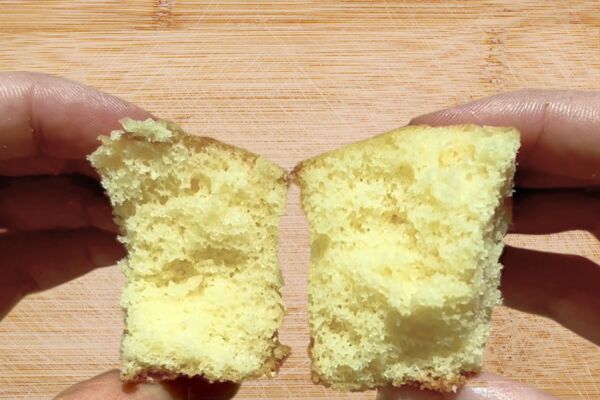
Why Professional Bakers Rely on Ultrafine Sugar
There's a reason chefs and bakers swear by C&H® Baker's Sugar™. It combines granulated sugar's performance with a finer grind's precision.
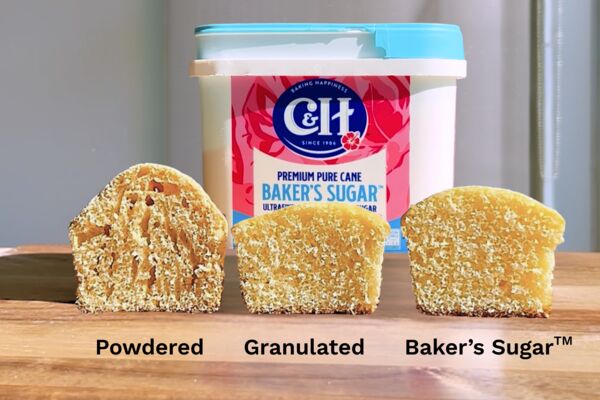
The Bake-Off: One Recipe, Three Sugars
We baked three cakes using the same ingredients, timing, and technique, but the sugar type varied.
Cake #1: Powdered Sugar
- Texture: The tallest height, but slightly dry with some tunneling, resulting in a dense texture more similar to a scone.
- Aeration: Minimal. Due to its fine consistency, it dissolves instantly and is not suitable for creaming because it lacks defined crystals to cut through the butter. On the other hand, it’s ideal in dense, buttery cookies like shortbread, as it doesn’t incorporate air, yielding a supremely tender, melt-in-your-mouth texture.
- Browning: Light golden color; less even due to limited Maillard reaction
- Conclusion: Great rise and smooth blending, but better suited for frostings or recipes that don’t rely on creaming.
Cake #2: Granulated Sugar
- Texture: The rise was slight, but the crumb was pleasantly structured with nice browning. The slow dissolution of sugar led to inconsistent moisture distribution, which affected the batter's expansion and structure as it set in the oven.
- Aeration: Moderate-sized sugar crystals can cut through butter effectively, but their larger size means they take longer to dissolve. This impacted the smoothness and consistency of the batter, which most likely hindered the rise.
- Browning: Nice golden color on top, slightly uneven
- Conclusion: A dependable everyday sugar with solid results.
Cake #3: C&H® Baker’s Sugar™
- Texture: Ideal balance, moist, tender crumb with an even structure.
- Aeration: Excellent. It has ultrafine crystals that dissolve more quickly and cream more efficiently, resulting in: a lighter batter, more stable air bubbles, a better rise, and a tender texture. Its ultrafine crystals cream beautifully, creating more lift and lightness.
- Browning: Deep, even golden color across the top.
- Conclusion: The most consistent and balanced cake, C&H® Baker’s Sugar™ gives you the results bakers love: reliable texture, rise, and flavor
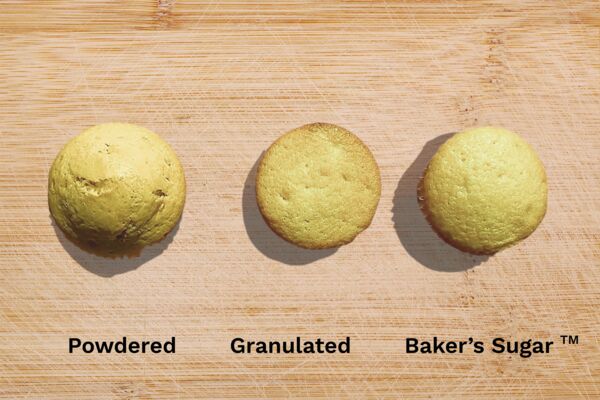
Conclusion
Although all the cakes tasted great, C&H® Baker’s Sugar™ stood out as the clear winner in terms of height, browning, and texture. It produced the best results, achieving an ideal balance between structure and softness. The lighter batter allowed for more stable air bubbles and an improved rise, resulting in a tender texture.

Crystallization & Dissolution
The smaller the sugar crystal, the greater its surface area, and the faster it dissolves.
Faster dissolution results in a smoother texture, fewer undissolved crystals, and a more uniform crumb. With its fine granulation, this sugar dissolves faster than standard granulated sugar, which helps create lighter and airier batters by improving the creaming process and trapping more air. Its ultrafine texture melts evenly, ensuring consistent browning and a uniform crumb. Whether you're whipping up meringues, preparing smooth glazes, or making delicate frostings, this sugar blends seamlessly without leaving any gritty residue. It can be substituted 1:1 for regular granulated sugar in any recipe. Additionally, because it retains moisture better, your baked goods will stay softer and fresher for longer.

Recipe by
Sarah Visintainer
@halfbatchbaking
Coming from a family of dieticians, chefs, and scientists, I have always seen the kitchen as both a laboratory and a place of joy. After training as a pastry chef and working in product design, I pursued food science to grasp the "why" behind each bake. Today, I bring that fusion of flavor, curiosity, and creativity to every bake, inspiring others to see the science behind the sweetness.

